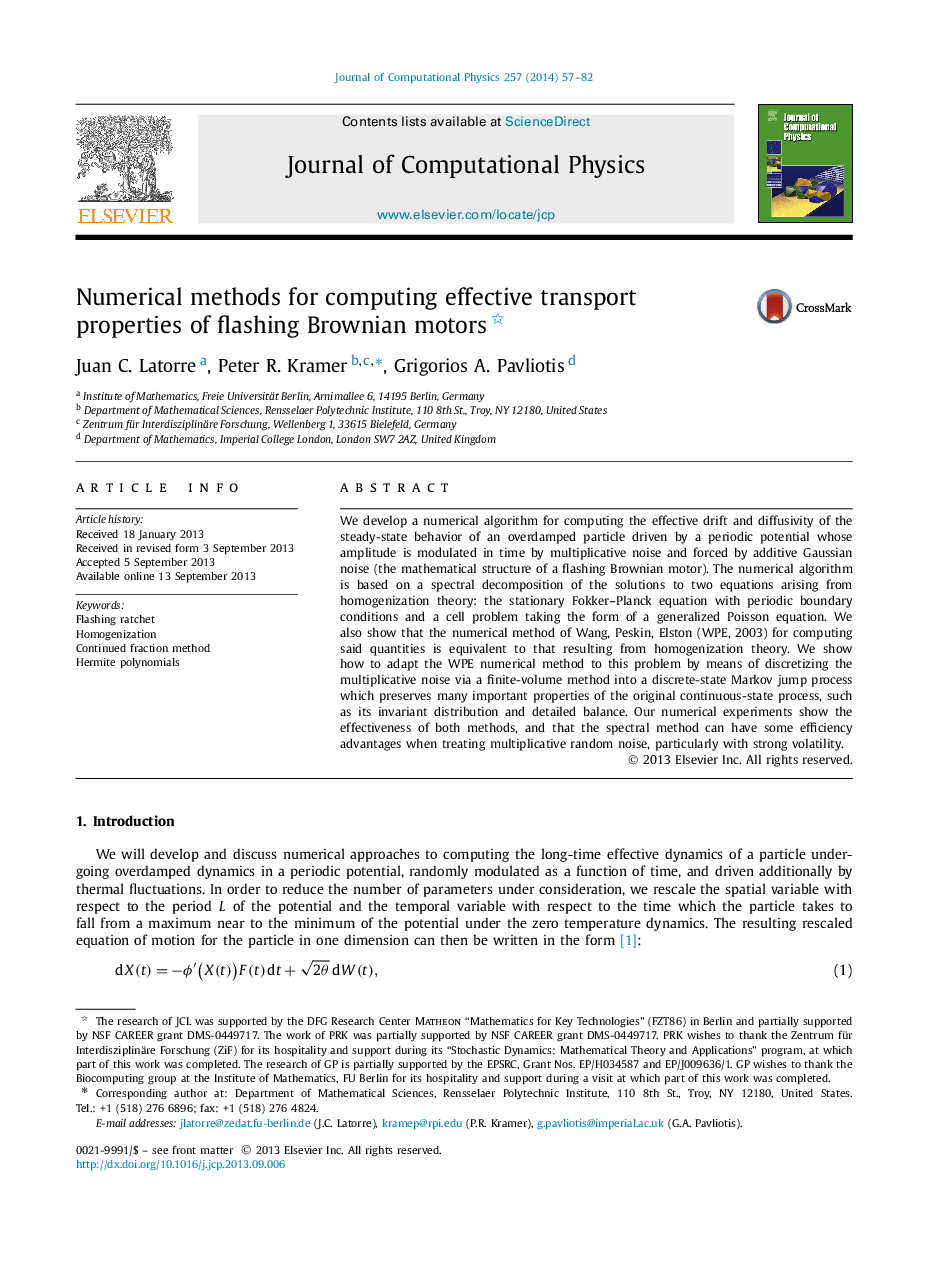| Article ID | Journal | Published Year | Pages | File Type |
|---|---|---|---|---|
| 10355968 | Journal of Computational Physics | 2014 | 26 Pages |
Abstract
We develop a numerical algorithm for computing the effective drift and diffusivity of the steady-state behavior of an overdamped particle driven by a periodic potential whose amplitude is modulated in time by multiplicative noise and forced by additive Gaussian noise (the mathematical structure of a flashing Brownian motor). The numerical algorithm is based on a spectral decomposition of the solutions to two equations arising from homogenization theory: the stationary Fokker-Planck equation with periodic boundary conditions and a cell problem taking the form of a generalized Poisson equation. We also show that the numerical method of Wang, Peskin, Elston (WPE, 2003) for computing said quantities is equivalent to that resulting from homogenization theory. We show how to adapt the WPE numerical method to this problem by means of discretizing the multiplicative noise via a finite-volume method into a discrete-state Markov jump process which preserves many important properties of the original continuous-state process, such as its invariant distribution and detailed balance. Our numerical experiments show the effectiveness of both methods, and that the spectral method can have some efficiency advantages when treating multiplicative random noise, particularly with strong volatility.
Related Topics
Physical Sciences and Engineering
Computer Science
Computer Science Applications
Authors
Juan C. Latorre, Peter R. Kramer, Grigorios A. Pavliotis,
